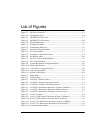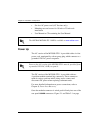
Chapter 1. Introduction
61200659L1-1 MX2800 STS-1 User Manual 1-3
STS-1 OVERVIEW
The MX2800 STS-1 multiplexer delivers up to 28 T1s or 21 E1s via
the SONET Synchronous Transport Signal Level One (STS-1) at a
speed of 51.84 Mbps. This is a cost-effective way to provide T1/E1
signals without the need for costly and complex multi-level
multiplexing/demultiplexing as in an M13 multiplexer. The T1/E1
signals can be directly multiplexed into the SONET STS-1 signal,
allowing simplified add and drop functionality.
The MX2800 STS-1 multiplexer also implements VT hairpining
and VT cross-connect mapping. Any VT can be hairpinned back to
the STS-1 signal for dropping further down the SONET ring.
Cross-connect mapping permits a VT to be mapped to any of the 28
available physical ports.
STS-1 Framing
The STS-1 frame is organized as 9 rows by 90 columns of bytes.
This frame is transmitted row by row, from left to right, and with
the most significant bit (MSB) of each byte transmitted first. It is
defined to operate at the basic rate of 8 kHz or 125 microseconds
per frame, or 8,000 frames per second at a bit rate of 51.84 Mbps.
The frame is divided into two parts to physically segregate the
layers. The first 3 columns make up the transport overhead (TOH);
the remainder is the synchronous payload envelope (SPE). The
TOH has 3 rows for the section overhead (SOH) and 6 rows for the
line overhead (LOH). The SPE has one column for the path
overhead (POH). The remaining 86 columns are for payload data
(49.536 Mbps).
STS-1 Pointers
There are several mechanisms that allow for timing compensation
between the STS-1 and its low speed tributaries. The MX2800
STS-1 multiplexer uses pointer adjustments to achieve timing


















